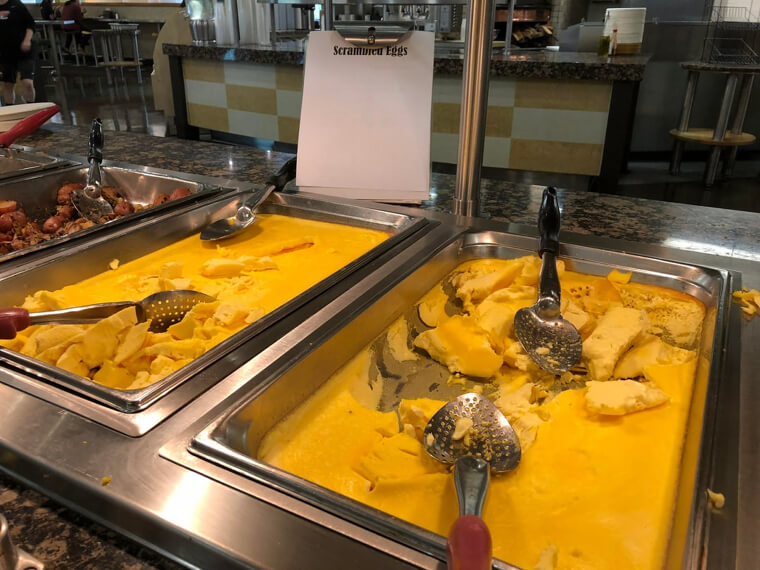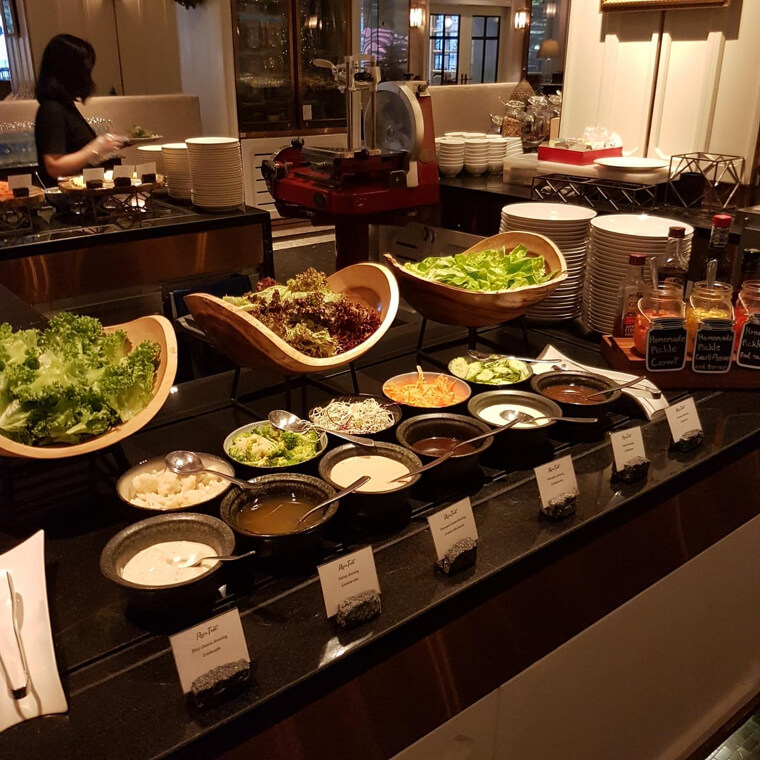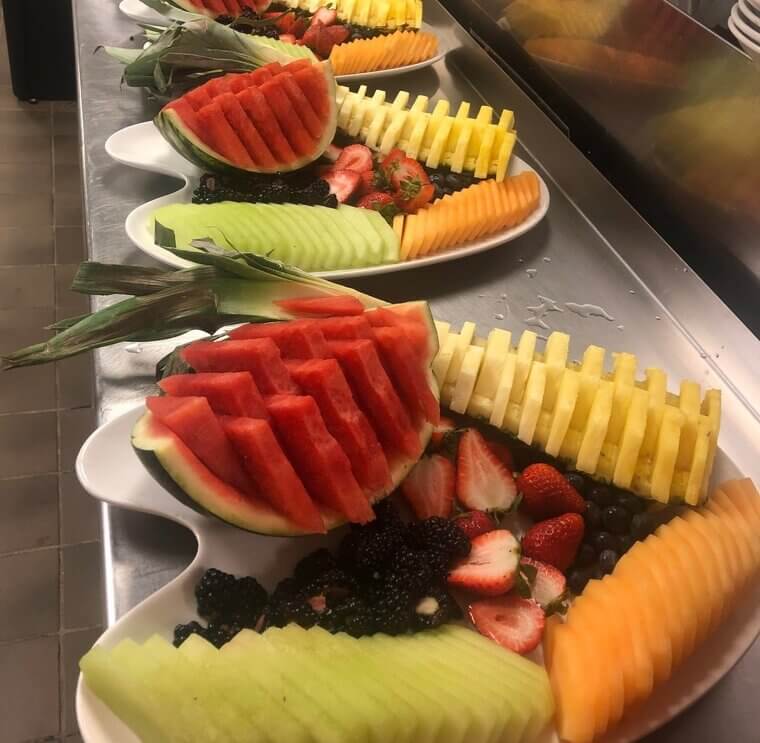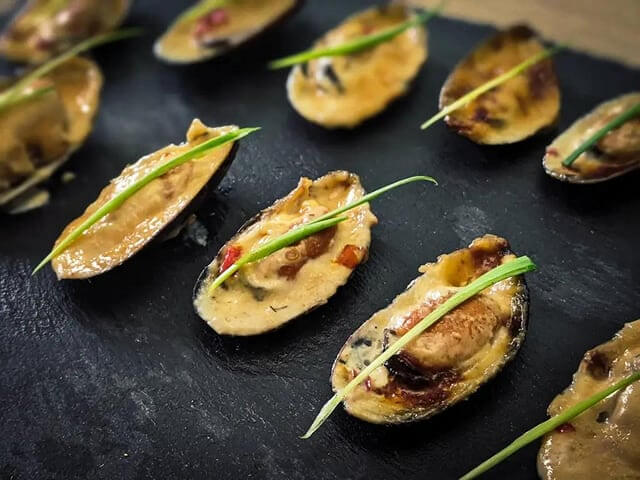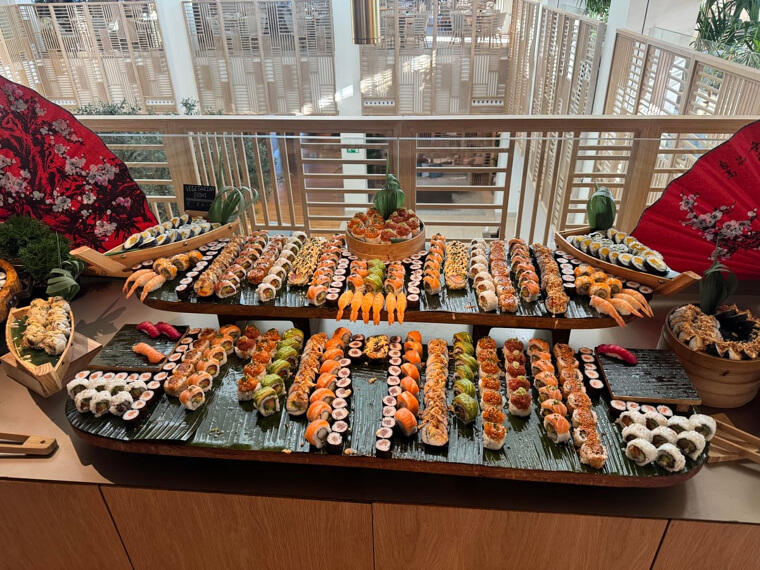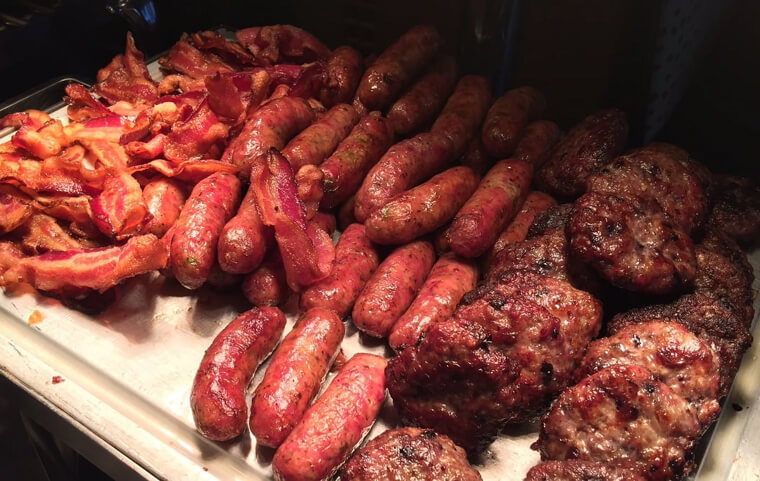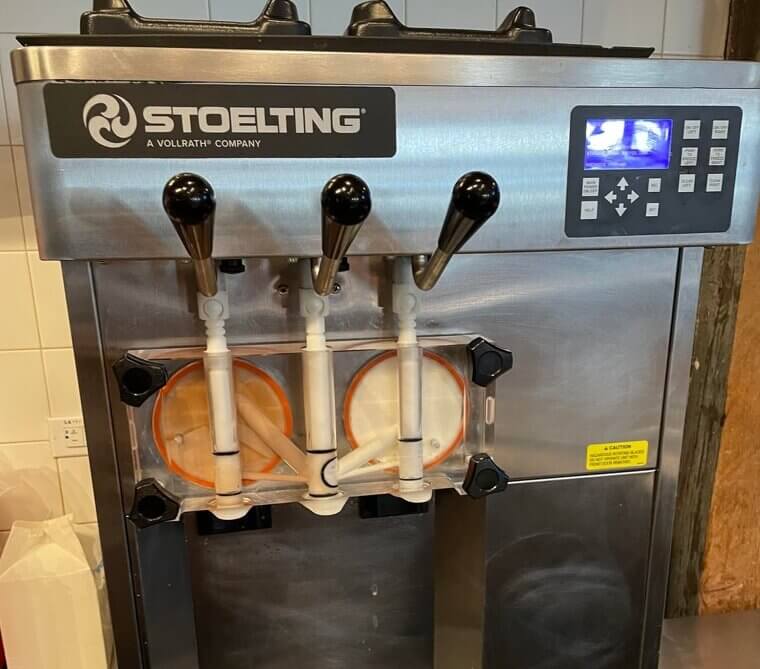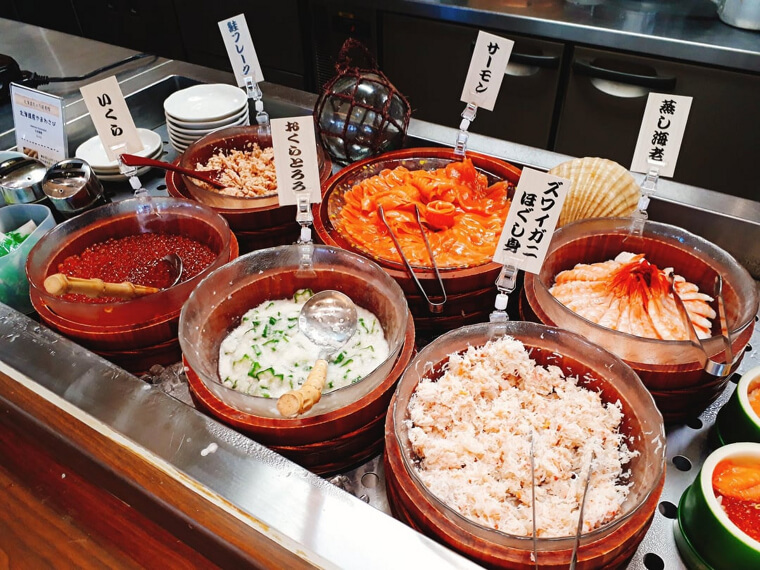Lukewarm Scrambled Eggs
Scrambled eggs at buffets often sit for long stretches in shallow pans that lose heat faster than staff can replace them. When eggs drift into the warm but not hot zone, bacteria can multiply quickly. The texture also changes as they continue to steam under the lid. What begins as fluffy turns rubbery, then watery. Food safety experts often avoid them for the simple reason that they are too unpredictable. Unless you see a fresh batch come out of the kitchen, you never really know how long they have been on display. Better choices are items that come straight off a griddle or made to order.
Sauces in Large Open Vats
Large containers of gravy, cheese sauce, or curry may sit uncovered or only lightly covered for long periods. Steam trays can keep the base warm, but they also allow the top layer to cool and thicken before reheating repeatedly. This cycle creates spots where bacteria can thrive. Food safety professionals prefer sauces served in smaller batches that get replaced more often. If a buffet uses huge vats, especially with visible skin on top or uneven texture, it is a clear sign to move on.
Anything Creamy Sitting at Room Temperature
Potato salad, macaroni salad, coleslaw, and creamy dips all fall into the same risk category. Their main ingredients spoil fast once they rise above safe temperatures. Buffets can struggle to keep cold foods truly cold, especially during busy hours when lids get left open. Experts suggest avoiding any creamy dish that is not clearly kept over ice or rotated often. The visible signs are easy to spot. Edges that look dry, a glossy surface, or ingredients separating slightly all point to improper holding conditions. When in doubt, skip it and choose fresh greens with bottled dressing.
Cut Fruit That Looks Too Perfect
A tray of neatly sliced melon and berries seems refreshing, yet fruit is one of the most mishandled buffet items. It requires careful storage, clean cutting surfaces, and strict temperature control. Buffets often miss at least one of those steps. Once fruit sits out, its moisture makes it an ideal host for bacteria. Experts also point out that fruit is often prepped hours ahead of service. If the colors look oddly bright or the pieces look overly glossy, it might have been treated with preservatives or sitting longer than it appears. Whole fruit or individually packaged servings are a safer pick.
Mussels or Clams in Steam Trays
Shellfish is already high risk, and buffet conditions raise that risk even more. Mussels and clams lose quality quickly once cooked, and they need very consistent heat to stay safe. A steam tray rarely provides that level of control. When these items cool down slightly, they become a breeding ground for dangerous bacteria. Food safety specialists usually warn that shellfish should be eaten fresh and handled with precision. A tray of them sitting out for unknown lengths of time is simply too much of a gamble. If you crave seafood, look for chilled shrimp on ice or freshly grilled fish.
Sushi Rolls in Bulk Trays
Sushi requires high quality fish, strict handling rules, and refrigeration that never wavers. Buffets rarely deliver this level of control. Sushi rolls placed in large quantities often sit longer than they should, especially during slower hours. The rice can dry out and the seafood can warm to unsafe temperatures. Food safety experts usually say sushi is best when prepared to order or purchased from places that specialize in it. At a buffet, it becomes guesswork. If you really want it, stick to vegetable rolls which carry far lower risks.
Carved Meats That Appear Dry
Buffet carving stations feel impressive, but the meats can spend extended time under heat lamps. Once the outer layer dries out, the inside often follows. Dry meat is not just a texture problem. It is usually a sign that the food has been sitting too long. Food safety experts recommend avoiding anything that the carver repeatedly slices from the same roast without replacing it with a new one. Ideally, staff should swap out the roast often and monitor temperatures closely. If the cut looks shriveled or gray, choose another protein.
Soft Serve Machines With Long Lines
Soft serve is not dangerous by nature, but the machines require meticulous cleaning. Buffets often lack the staff time to break down and sanitize them properly each day. When a machine is not cleaned thoroughly, residues inside can harbor bacteria. Experts suggest only indulging if the establishment appears very well maintained and if staff seem attentive to machine upkeep. If you notice drips, sticky handles, or a messy counter below, it is safer to skip dessert and grab something prepackaged.
Fried Foods That Look Pale
Fried items at buffets suffer when the oil is old or the temperature fluctuates. Pale or limp fried pieces often indicate they have been fried at too low a temperature, which means more oil absorption and less effective killing of bacteria. Once fried items sit out, they soften quickly. Experts say the safest fried foods are ones added in small, frequent batches. If the tray looks untouched for a while or the food looks glossy rather than crisp, choose something else.
Anything With a Mystery Label
Buffets often use vague signs like mixed casserole or house special. Food safety experts avoid these items because you cannot tell how perishable the ingredients are or how long the dish has been out. Mixed dishes hide warning signs such as dried edges, separated sauces, or off smells. If you cannot identify the components at a glance, the safest choice is to skip it. Clear labeling and fresh rotation are signs of a well run buffet. When labels are mysterious or missing entirely, it is best to stick to familiar foods you can judge with confidence.

